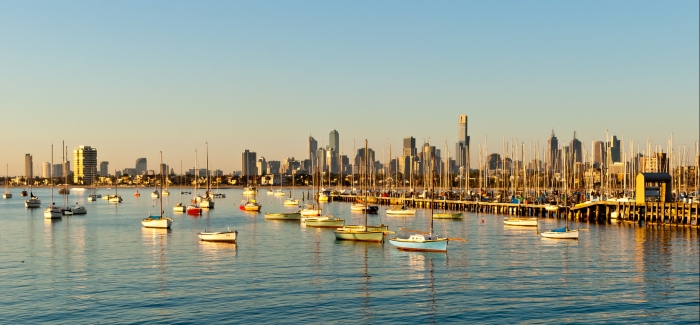Want to study in Australia and thinking of working there during or after your studies? Read on for an overview of the requirements for international students.
To work in Australia during your studies
If you’d like to find part-time work in Australia while studying, your student visa generally entitles you to work for up to 40 hours per fortnight during term time and unlimited hours during scheduled semester breaks. If you’re completing a master’s by research or a PhD, you do not have any work restrictions. You cannot start work until you’ve commenced your course.
Work that you’re required to undertake as part of your course is not counted towards the 40-hour limit. Voluntary work is also not included as long as it’s genuinely voluntary (unpaid), of benefit to the community and for a non-profit organization. However, if your voluntary work could have been undertaken by an Australian resident who would have earned a wage, it is included in the 40 hours.
While earnings from part-time work can be a helpful extra, you shouldn’t rely on this to cover your living costs. Your student visa was granted based on your confirmation that you have sufficient funds to cover your living and tuition costs during your stay in Australia.
You, your employer or your education provider can view your visa online for free using the Visa Entitlement Verification Online (VEVO), where you can check all the applicable conditions.
You must obtain a Tax File Number (TFN) in order to work in Australia. You can apply for this online from the Australian Taxation Office. The TFN is your personal reference number in the Australian tax system, so you should keep it secure.
Your earnings will probably be below the tax-free threshold of AU$18,200 (~US$13,750). However, you should nonetheless complete a tax return at the end of the Australian income year (30 June), reporting the income you’ve earned in Australia (as well as any income from work based overseas while you are a temporary resident of Australia) and what tax you paid. You’ll receive a notice of assessment and possibly a tax refund.
Working in Australia after graduating
If you’d like to stay in Australia to work after graduating, you’ll need to apply for an Australian work visa. You can normally hold only one visa at a time, unless you have a bridging visa, so your new visa will come into effect as soon as it’s granted, replacing any older visas.
The most likely visa you’ll be applying for as an international graduate in Australia is the Temporary Graduate visa (subclass 485). This lets those who’ve recently graduated from an Australian higher education institution stay in the country temporarily for work, travel or study.
This visa has two streams:
- Graduate work stream – For international students who graduate with an eligible qualification that relates to an occupation considered in-demand in the Australian labor market, according to the Skilled Occupation List (SOL). A visa in this stream is granted for 18 months.
- Post-study work stream – This is for graduates of all other disciplines. The length of this visa depends on your qualification. If you have a bachelor’s degree, master's (extended) or master’s by coursework degree, your visa is valid for two years. If you have a master’s by research, the visa length is three years, while visas for PhD graduates are valid for four years.
If you have a ‘No Further Stay’ condition attached to your visa, you can still apply for this visa using Form 1409, which includes an application for the condition to be waived.
The requirements for the Temporary Graduate visa are:
- You must currently hold an eligible visa.
- You meet the health and character requirements.
- Valid health insurance
- Valid passport
- You must meet the specific requirements of the visa stream you’re applying to.
- Evidence that you meet the English requirement – if you’re from a non-English speaking country you’ll need to have reached a certain score in an English language test such as IELTS. You must have taken the test within the three years before you apply, and include the results in your visa application.
- You meet the Australian study requirement in the last six months.
To apply, you’ll first need to prepare your documents, proving that you meet all the requirements. These documents include your birth certificate, passport photos, letter from your health insurance provider, completion letters and course transcripts from your university, and more depending on your circumstances.
You should then lodge your application by post or online via your ImmiAccount, providing all your supporting documents and paying the visa application charge, which is currently AU$1,500 (~US$1,170) for you, plus extra for any accompanying family members. During the visa processing time, you may be eligible for a bridging visa, which allows you to stay in Australia while your visa application is processed. You might be asked to provide more information or attend a visa interview.
Becoming an Australian permanent resident
If you’d like to stay in Australia and become a permanent resident, there are a number of visas that allow you to do so. You can use the Department of Immigration’s Visa Finder to explore your options, which include:
Skilled Nominated visa (subclass 190)
This is a points-tested visa which lets skilled workers who are nominated by a state or territory government agency live and work in Australia as a permanent resident. As well as being nominated for a job on the Skilled Occupation List (SOL), you’ll need to have obtained the Suitable Skills Assessment for your profession.
Skilled Independent visa (subclass 189)
This Australian work visa is open to applicants who have not been nominated by a state or territory. Again, your job will need to be in the SOL and you’ll need a Suitable Skills Assessment. To apply for this visa, you need to submit an Expression of Interest (EOI) via an online form in SkillSelect (the government’s online system for ranking visa applicants). The EOI allows skilled workers to be found and nominated by employers, as well as state or territory governments. After completing your EOI, you’ll be given a score and ranked against other applicants in an automatic process. If eligible, you’ll be invited to apply for the Skilled Independent Visa.
To apply for an Australian work visa, you’ll usually need to pass and achieve a high score in the points test, which is used to help Australia select applicants who have the skills and attributes it needs. Points may be awarded for factors such as your English proficiency, Australian work experience and qualifications.












